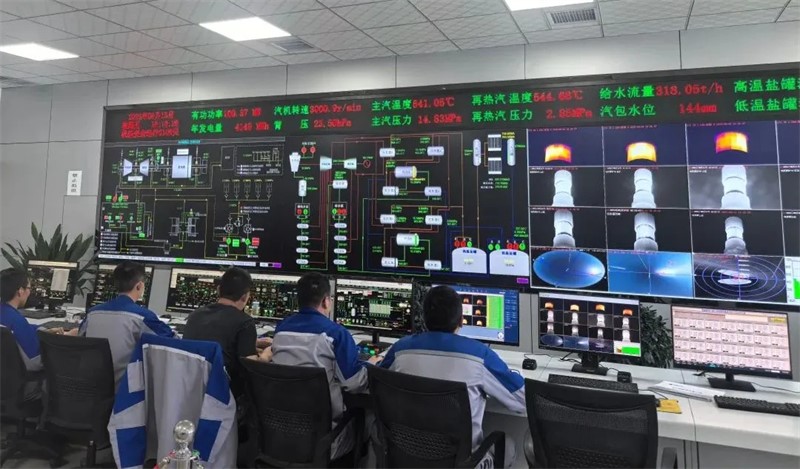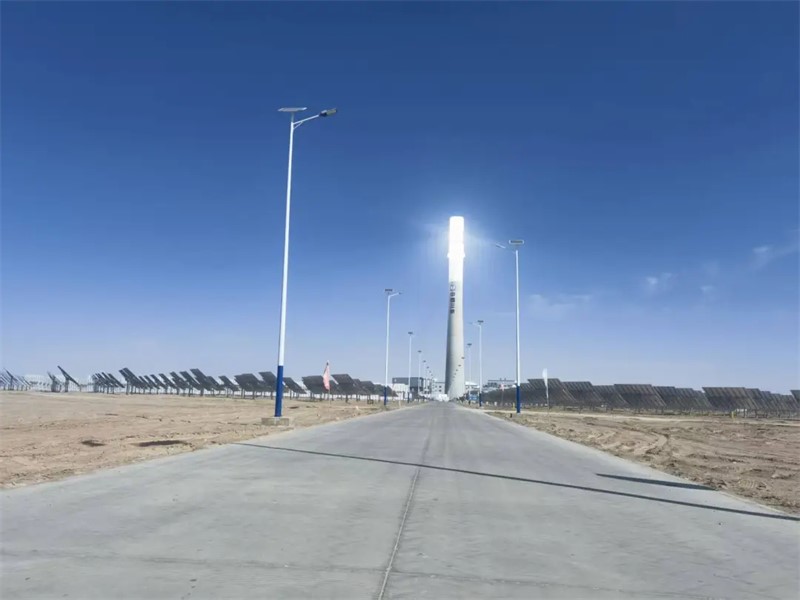On 15 August, the first 100-MW CSP project in Qinghai Province—the CTGR Qingyu HVDC Phase II, Lot 3, 100-MW CSP plant—reached full-load operation. The project, under the turnkey EPC leadership of Northwest Engineering Corporation Limited, has entered stable commercial operation, injecting strong momentum into regional clean-energy supply and the construction of a new-type power system. The milestone marks another breakthrough in the application and large-scale development of CSP technology in China’s high-altitude northwestern regions.

Covering approximately 287 hectares, the plant employs internationally leading tower concentrating technology, featuring 23,731 four-sided heliostats each with a 30 m² reflective surface, yielding a total mirror field aperture area of about 711,900 m². The receiver is positioned 210 m above ground, and the facility is configured with a 12-hour molten-salt thermal-energy storage system. The EPC consortium comprises Northwest Engineering Corporation Limited, Cosin Solar Technology Co., Ltd., and CHINA ENERGY ENGINEERING GROUP ZHEJIANG THERMAL POWER CONSTRUCTION CO., LTD. Construction began in March 2023, and the plant was connected to the grid on 29 April 2025. At full load it is expected to generate 227 GWh of electricity annually—enough to supply nearly 190,000 households for an entire year—while cutting CO₂ emissions by about 226,300 t each year. Ecologically, this equates to afforesting 188,600 mu (≈12,600 ha) of land, contributing significantly to China’s dual-carbon goals.
During execution, the project team overcame extreme conditions such as the Gobi Desert’s intense winds and drifting sands, resolving critical technical challenges in high-precision heliostat field control and high-temperature molten-salt heat storage and transfer. Core equipment—including molten-salt pumps and heliostats—was successfully localized, laying a solid foundation for the independent development of the CSP supply chain. By innovatively adopting a “CSP + PV” multi-energy complementary model, the project markedly enhances local grid stability and renewable-energy accommodation, accelerating the green and low-carbon transformation of the energy system. Construction also prioritized local employment, fostering regional economic and social benefits in tandem. Furthermore, a checkerboard heliostat layout and a reclaimed-water recycling system were implemented, reducing regional wind speed and surface-water evapotranspiration, strengthening sand fixation and soil conservation, and delivering dual dividends of energy development and ecological protection—offering an innovative paradigm for the integration of renewable-energy development and ecological civilization in China.

Moving forward, the plant will continue to serve as a dispatchable peaking resource, ensuring the stability and reliability of the ultra-high-voltage transmission corridor, and will help Qinghai build a national-level new-energy industrial base. The technical standards and solutions developed for the project will provide a demonstrative template for large-scale CSP deployment nationwide, accelerating the construction of a green, low-carbon energy system.


